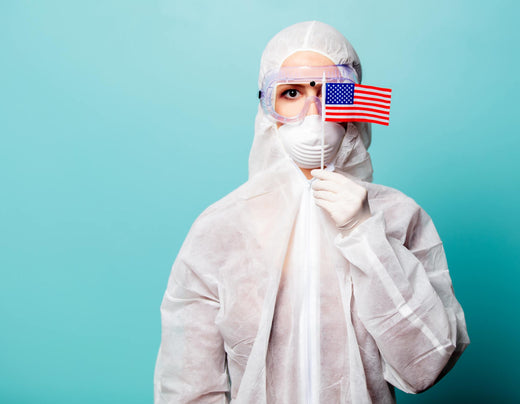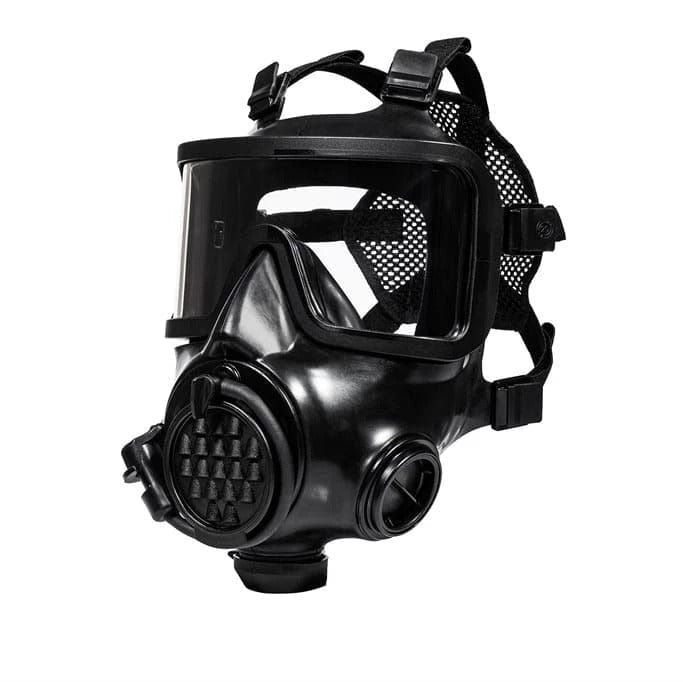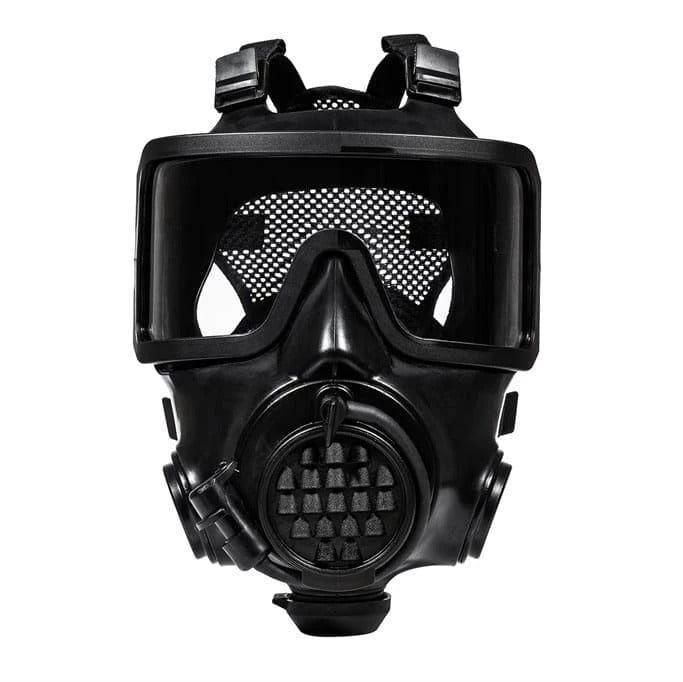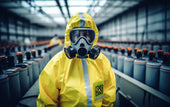The coronavirus disease 2019 (COVID-19) pandemic has been going on for more than a year, during which time we have seen much suffering, death, and instability in daily life.
However, significant illness epidemics have influenced much of world history.
As the Black Death pandemic swept Europe and Asia, individuals' reactions to their faith, jobs, and government were dramatically altered.
Societies have been plagued by disease for thousands of years, and the United States is no different.
Worst Outbreaks in U.S. History

1. Smallpox spread by European settlers: 1633-1634
2. Yellow fever spread from the Caribbean: 1793
Yellow fever spread from the Caribbean Islands to Philadelphia during a humid summer in the late 1700s. Nearly 50 years later, it swept into Norfolk, Virginia, in 1855, but the Mississippi River Valley experienced the most significant outbreak in the United States in 1878.
In the spring of 1878, thousands of refugees came to America's coastlines from the Caribbean, another outbreak epicenter, to avoid contracting the fever. President Rutherford B. Hayes approved the Quarantine Act of 1878, which allowed the Marine Hospital Service to prohibit immigrants from arriving on land by ship.
The region recorded over 120,000 instances of fever in the spring and summer of 1878, along with roughly 13,000 to 20,000 fatalities. The fever caused a yellowish tint to the skin and eyes and bloody vomiting.
Over fifteen percent of the city's population fled to escape the fatal disease as the outbreak began in New Orleans and quickly traveled up the valley. Similar to the coronavirus, the yellow fever affected various industries. Infected cities saw a population decline, the economy suffered, and thousands died. Later, a vaccine was created, and permission was granted for distribution.
It wasn't until 1900 that scientists determined that the source of the disease was a species of mosquito native to Africa and tropical climes.
Mosquitoes are crucial in spreading this disease, especially in Central America, South America, and Africa. Eliminating mosquitoes has successfully managed yellow fever.
Although there is no treatment for yellow fever, those who do recover gain lifetime immunity.
3. Cholera in three waves: 1832-1866
4. Scarlet Fever: 1858
5. “Typhoid Mary”:1906-1907
6. Spanish flu: 1918
Between 1918 and 1919, the flu rapidly spread worldwide, infecting almost one-third of humanity.
Following the discovery of the first case among military personnel, there were 675,000 deaths in the US, with mortality rates highest in children under five, persons in their 20s to 40s, and people aged 65 and beyond.
7. Diphtheria epidemic: 1921-1925
8. The peak of polio: 1916-1955
9. H2N2 flu: 1957
10. Second measles outbreak: 1981-1991
11. Contaminated water in Milwaukee: 1993
Cryptosporidium, a parasite that causes cryptosporidiosis, was found in one of Milwaukee's two water treatment facilities. Symptoms include dehydration, fever, stomach pains, and diarrhea.
The greatest waterborne outbreak in American history, according to an early investigation by the Water Quality & Health Council, infected 403,000 people and claimed 69 lives.
Most people were able to heal themselves. Most of those who passed away had weak immune systems.
Cryptosporidiosis remains an ongoing issue. According to the CDC, infections rose 13% between 2009 and 2017. The number of cases and outbreaks varies every year.
Cryptosporidium can spread through contact with contaminated feces, food, water, or soil. It is one of the most frequent illnesses associated with summertime recreational water use, and it is easily contagious among farm animals or in childcare facilities.
When camping or after interacting with animals, be sure to maintain good personal hygiene, such as washing your hands. If you have diarrhea, avoid swimming.
12. H1N1 flu: 2009
The H1N1 virus was discovered in the spring of 2009 in the United States. It soon spread throughout the nation and the rest of the world, making swine flu news.
The CDC calculates 12,469 fatalities, 274,304 hospitalizations, and 60.8 million cases nationwide.
According to estimates, 80% of the deaths associated with this outbreak happened among people under 65 worldwide.
Everyone who desired the H1N1 vaccine could have it before the end of December 2009. However, virus activity levels started to decline.
The seasonal H1N1 strain still circulates, but it is less deadly and hospitalizes fewer people. Every year, influenza strains change, decreasing the efficacy of the previous year's immunizations. To reduce your risk of getting the flu, annual immunization is crucial.
13. Whooping cough: 2010, 2014
Whooping cough, also known as pertussis, is one of the most prevalent infections in the US and is highly contagious. These episodes of coughing can continue for months.
The risk of life-threatening illnesses is higher in infants too young for vaccination. Ten newborns perished during the initial outbreak.
Whooping cough outbreaks occur every three to five years. According to the CDC, increased instances will probably become the "new normal."
The disease is significantly less common now. According to the CDC, everyone should get the vaccine, but pregnant women should get it during their third trimester to maximize their baby's protection.
Additionally, getting the vaccine is advised for all kids and anyone who hasn't had it before.
14. HIV and AIDS: 1980s to present
Scientists thought the HIV pandemic was a rare lung infection when it first appeared in the United States in the 1980s. After doing scientific research, the country learned that HIV weakens the body's immune system, making it less able to fight off other infections.
HIV can be passed from person to person sexually, by blood or body fluids, or, if untreated, from the mother to an unborn child.
The CDC reports that among Americans aged 25 to 34, AIDS, the terminal stage of HIV, was the ninth greatest cause of death in 2018. It's not a given that someone with HIV will go on to acquire AIDS.
For high-risk populations, pre-exposure prophylaxis, also known as PrEP, is a means to prevent HIV infection before exposure. Two medications are found in the pill (marketed under the name Truvada) and combined with other medications to treat HIV.
These drugs can help prevent HIV from becoming a chronic infection in those exposed to it through sexual activity or drug injection.
According to the CDC, the world can control the HIV epidemic without a vaccine or treatment while creating the foundation for the eventual elimination of HIV for the first time in modern history.
High-risk groups must be treated with treatment and prevention to control the epidemic.
Although there is no known treatment for HIV, the risk of transmission can be reduced by taking precautions, including using clean needles and using barrier methods during sex.
Some precautions can be taken during pregnancy to stop the syndrome from spreading from mother to fetus.
PEP (post-exposure prophylaxis), a novel antiviral drug, is used in emergencies to stop HIV from emerging within 72 hours.
15. COVID-19: 2020
In late 2019, Wuhan City, Hubei Province, China, reported the discovery of the SARS-CoV-2 virus, a coronavirus responsible for COVID-19. In the neighborhood, it appears to expand quickly and consistently.
Worldwide cases have been reported, and as of late May 2020, there have been over 1.5 million infections and over 100,000 fatalities in the US.
The elderly and those with prior medical illnesses, such as diabetes or heart or lung disease, seem more susceptible to the disease's potentially fatal complications.
Key symptoms comprise:
-
fever
-
dry cough
-
trouble breathing
-
fatigue
Conclusion

Past pandemics had an enormous effect on the values of the human race.
On the one hand, they have impacted the economy, society, and mental health while also causing millions of fatalities.
However, they resulted in critical scientific advancements such as the discovery of quarantine, the creation of vaccinations, and new treatment techniques.
The COVID-19 pandemic showed that we must still be equipped to identify new disease pandemics, anticipate their development, or stop their spread. There is an unmet need to raise knowledge of and practice pandemic preparedness to lessen the severe load on healthcare systems.
Additionally, it serves as a sharp reminder of the gap in access to healthcare between those who can afford it and those who cannot, particularly in nations without universal coverage.
National health policy agencies should prioritize extensive testing, contact tracing, quarantine, and vaccine research in managing infectious disease pandemics.
Future research should improve methods to stop the onset of fresh pandemics and establish a consistent response.






















































